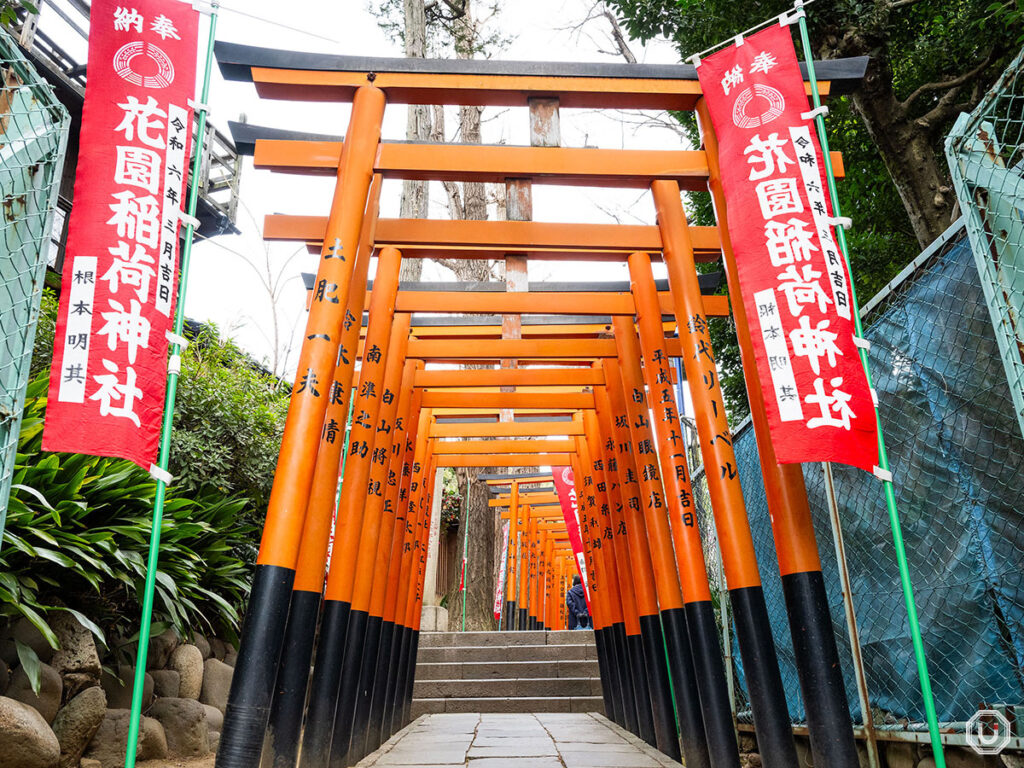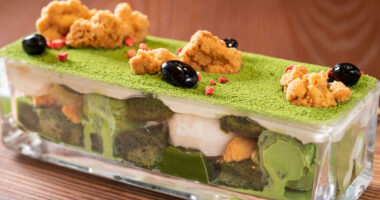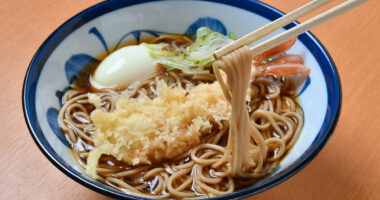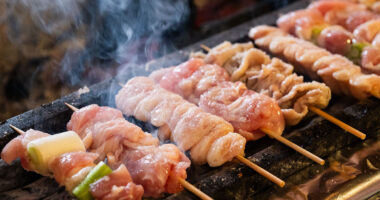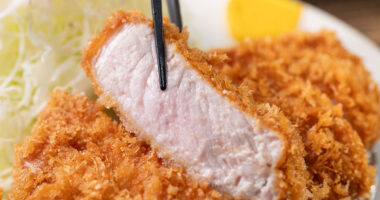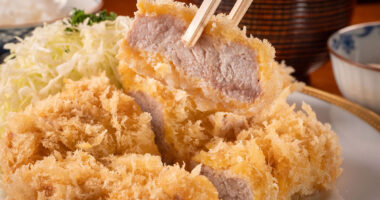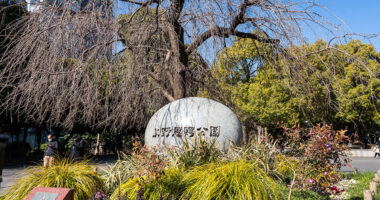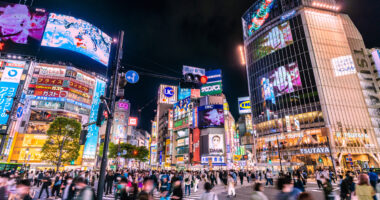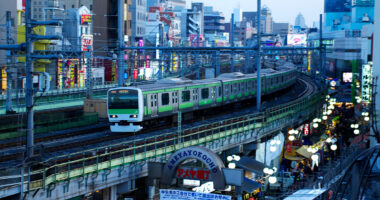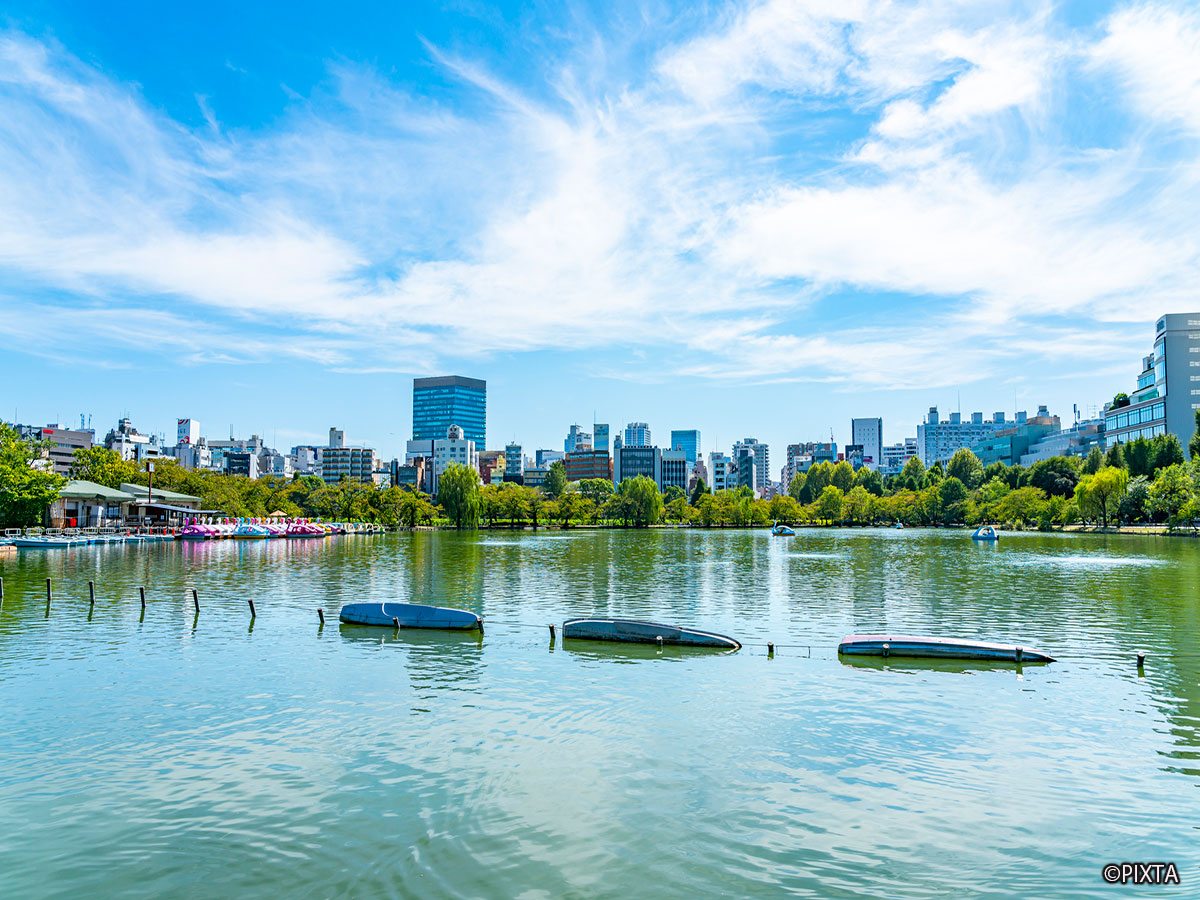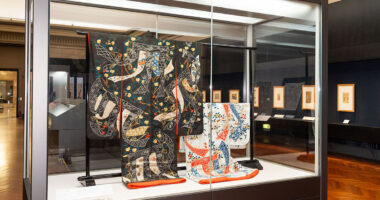In “Ueno Onshi Park” (hereunder referred to as “Ueno Park”), located in Taito-ku (Taito Ward) Tokyo, there are numerous temples and shrines worth visiting, including shrines with gorgeous and lavish decorations, and temples said to bring good financial fortune.
With various temples and shrines situated close to one another, you could easily spend a whole day exploring them.
Whether you’re looking to experience Japanese history and culture or seeking blessings for good fortune, here are some must-visit temples and shrines in Ueno Park.
- Ueno Toshogu Shrine: a must visit for those seeking career advancement and success
- Shinobazunoike Bentendou Temple: a popular shrine for those seeking financial success
- Hanazono Inari Shrine: vermilion torii gates that bless visitors with good relationships
- Gojoutenjin-sha: a rare site where two shrines with different origins stand adjacent to each other.
Ueno Toshogu Shrine: a must visit for those seeking career advancement and success
Ueno Toshogu Shrine enshrines the deifications of Tokugawa Ieyasu, the first shogun of the Edo period, along with the eighth shogun, Tokugawa Yoshimune, and the fifteenth shogun, Tokugawa Yoshinobu. The shrine was originally built in 1627.
In 1651, under the orders of the third shogun, Tokugawa Iemitsu, the shrine buildings were reconstructed, and today, they are designated as Important Cultural Properties of Japan.

The Karamon (Chinese style gate) of Ueno Toshogu Shrine. The approach area is free to enter
Highlights of Ueno Toshogu Shrine: special areas accessible with admission fee
One of the most striking attractions of Ueno Toshogu Shrine is undoubtedly its shimmering golden shrine building. It’s a magnificent golden shrine modeled after Nikko Toshogu Shrine in Nikko City, Tochigi Prefecture, which also enshrines the deification Tokugawa Ieyasu.
With its intricate decorations in every detail, the shrine will captivate you with its beauty and historical ambiance.
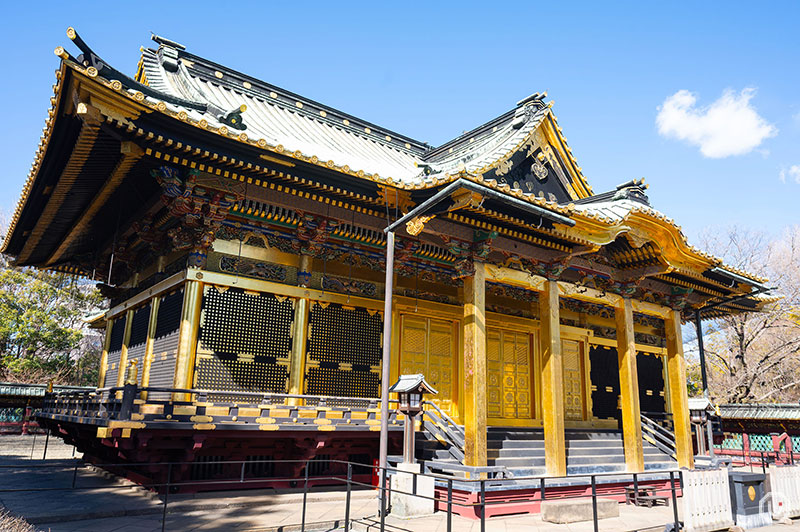
The shrine building of Ueno Toshogu Shrine, which can be viewed for an admission fee
There are numerous highlights in the viewing area, which can be entered by paying an admission fee of 500 JPY for adults and 200 JPY for elementary school students (ages 6 to 12).
The Karamon (Chinese style gate) and Sukibei Wall, both designated as Important Cultural Properties, are must-sees.
The Karamon in particular rivals the Shrine Building in its splendor and gorgeous decorations. The carvings of peonies, lions, and dragons are magnificent, showcasing the high level of craftsmanship of that era.

The Karamon at Ueno Toshogu Shrine, which can be viewed up close for a separate fee
Also, the sacred camphor tree towering in the viewing area and the meditation space installed in front of it offer a place to take in and appreciate Japanese wabi-sabi aesthetics.
Once you’ve taken off your shoes, sit in the meditation space, and face the sacred tree. You will mysteriously feel at peace.
You can spend a tranquil time becoming one with nature, forgetting that you are actually in the heart of the city.
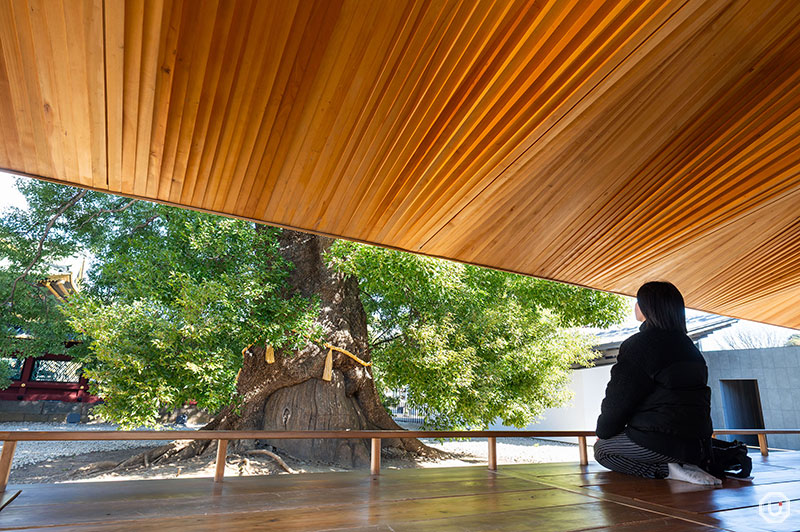
The sacred camphor tree of Ueno Toshogu Shrine seen from the meditation space
Ueno Toshogu Shrine’s good luck charms and shrine seals
Ueno Toshogu Shrine is said to bring benefits for career advancement, success in competition, and health.
There are various omamori (amulets available at Japanese shrines and temples that grant good luck or protection) for matchmaking, household safety, etc., but particularly popular is the “Shōryū Mamori” (Rising Dragon Amulet), available only for three days each month: the 16th, 17th, and 18th.
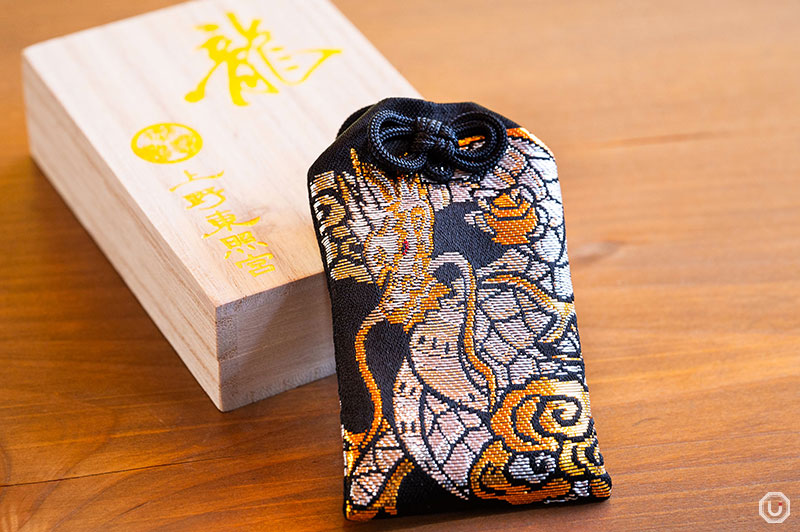
“昇龍守,” Shoryu Mamori 1,500 JPY
This amulet is believed to bring great fortune, victory, and career advancement, making it ideal for those striving for success in their professional lives.
Also popular are the monthly limited goshuin (a special seal obtained as proof of pilgrimage at Japanese shrines and temples) depicting the shrine grounds in ukiyo-e style, and ema (wooden votive plaques on which visitors to Japanese shrines and temples write their wishes) designed with peonies. Be sure to get these along with the amulets.
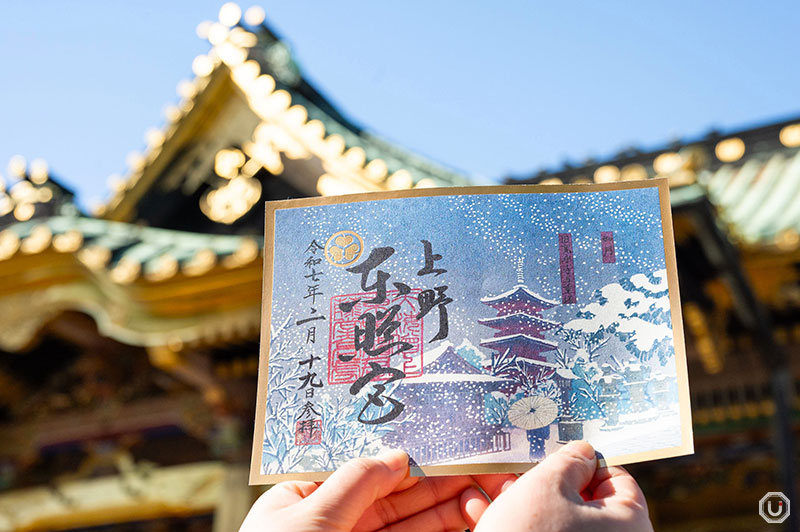
February-exclusive goshuin (as of 2025) 1,000 JPY
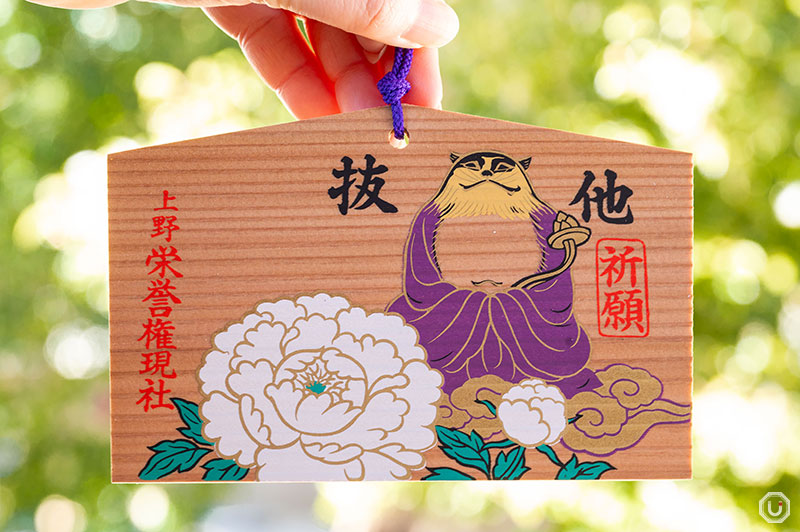
Ema 800 JPY
Ueno Toshogu Shrine Information
| Name | 上野東照宮 Ueno Toshogu Shrine |
|---|---|
| Address | 9-88 Ueno Kōen, Taito-ku, Tokyo
|
| Phone number | 03-3822-3455 |
| Visiting Hours | Mar-Sep. 9:00-17:30 Oct-Feb.9:00-16:30 |
| Omamori and Goshuin | Mar-Sep. Available from 9:00-16:30 Oct-Feb. Available from 9:00-15:30 |
| Admission fee | Adults 500 JPY Elementary school students (ages 6 to 12) 200 JPY Groups(20 or more people)400 JPY |
| Official website | https://www.uenotoshogu.com/index.html |
Shinobazunoike Bentendou Temple: a popular shrine for those seeking financial success
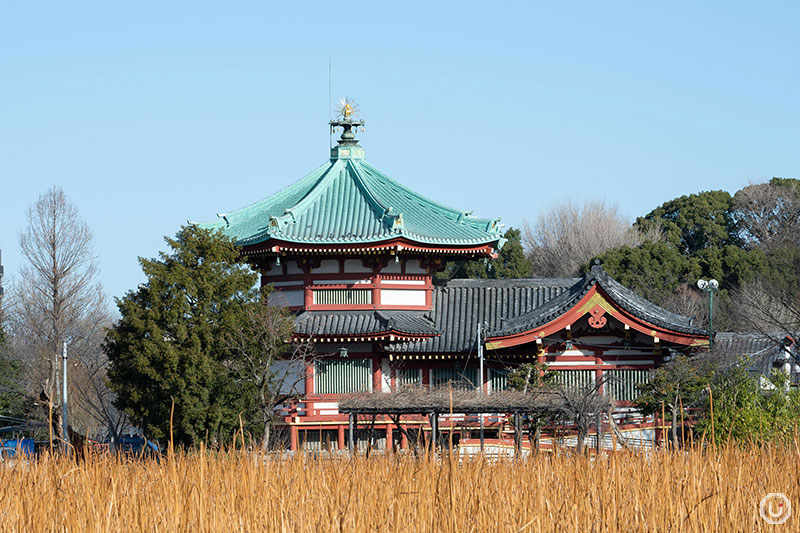
Shinobazunoike Bentendou Temple as seen across Shinobazu Pond
Shinobazunoike Bentendou Temple stands as if floating on Shinobazu Pond in Ueno Park.
As you proceed along the approach, you are greeted by a statue of Ugajin, a deity with a snake’s body and a human head. Shinobazunoike Bentendou Temple is particularly known for bringing blessings related to financial fortune.
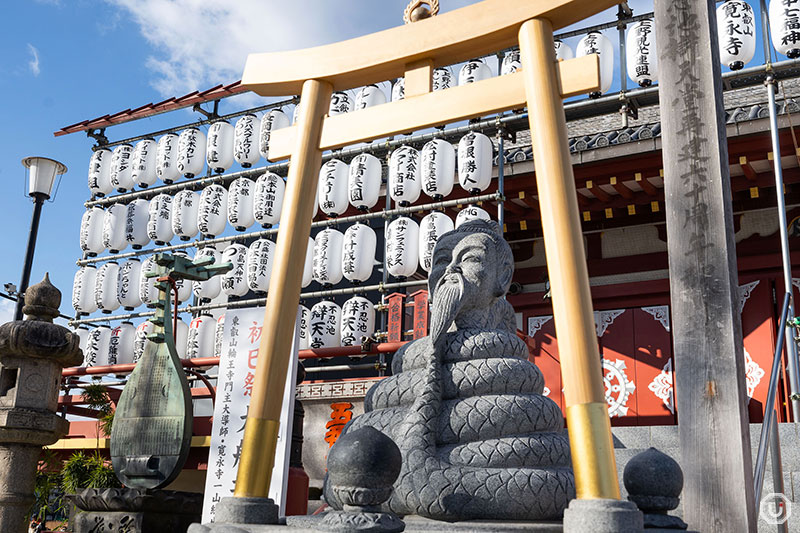
Statue of Ugajin at Shinobazunoike Bentendou Temple
Shinobazunoike Bentendou Temple highlights: large lanterns inside the shrine building
Shinobazunoike Bentendou Temple features a unique octagonal design. Inside the hall, a large lantern hangs from the ceiling, creating a striking and powerful presence when viewed up close.

Lantern hanging inside the hall at Shinobazunoike Bentendou Temple
At night, the shrine building is illuminated, giving it a completely different atmosphere from during the day. While visiting in the daytime is delightful, the shrine’s evening ambiance adds a special charm.
Especially from early to mid-summer, when the lotus flowers growing in Shinobazu Pond are in full bloom, the atmosphere becomes dreamlike.
Omamori and goshuin at Shinobazunoike Bentendou Temple
Benzaiten, enshrined at Shinobazunoike Bentendou Temple, is the guardian deity of music and performing arts, and is also said to bring benefits for financial fortune.
Besides Benzaiten, Daikokuten is also enshrined on the grounds. There is a legend that Toyotomi Hideyoshi, a great general who was active during the Warring States period, deeply revered Daikokuten.
Daikokuten is also a deity of financial fortune and business prosperity, so Shinobazunoike Bentendou Temple offers a variety of amulets related to financial luck.
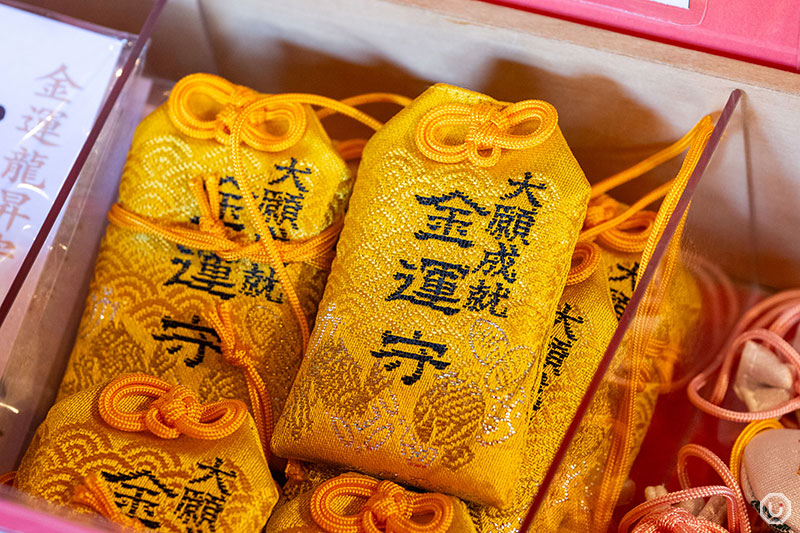
Omamori 1,000 JPY
Furthermore, every September, the Minarukane Grand Festival is held, during which limited-edition omamori are distributed. These are expected to offer an even greater chance at financial fortune.
For goshuin, the stamps can either be written directly in your goshuinchō (a book for collecting special seals obtained as proof of pilgrimage at Japanese shrines and temples), or you can receive a pre-written paper version. Both are available for 500 JPY.
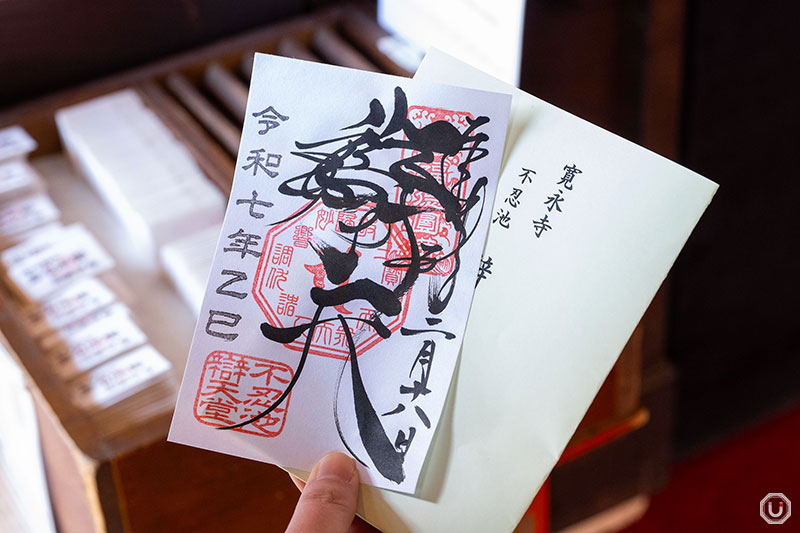
Goshuin 500 JPY
Shinobazunoike Bentendou Temple Information
| Name | 不忍池辯天堂 Shinobazunoike Bentendou |
|---|---|
| Address | 2-1 Ueno Kōen, Taito-ku, Tokyo
|
| Phone number | 03-3821-4638 |
| Visiting Hours | 9:00-17:00 |
| Omamori and Goshuin | Available from 9:00-17:00 |
| Admission fee | Free |
| Official website | https://bentendo.kaneiji.jp/ |
Hanazono Inari Shrine: vermilion torii gates that bless visitors with good relationships
Located about a 5-minute walk from Ueno Toshogu Shrine, Hanazono Inari Shrine is distinguished by the path leading up to it lined with vermilion torii gates.
This striking approach is one popular spot in Ueno Park, attracting especially large crowds.
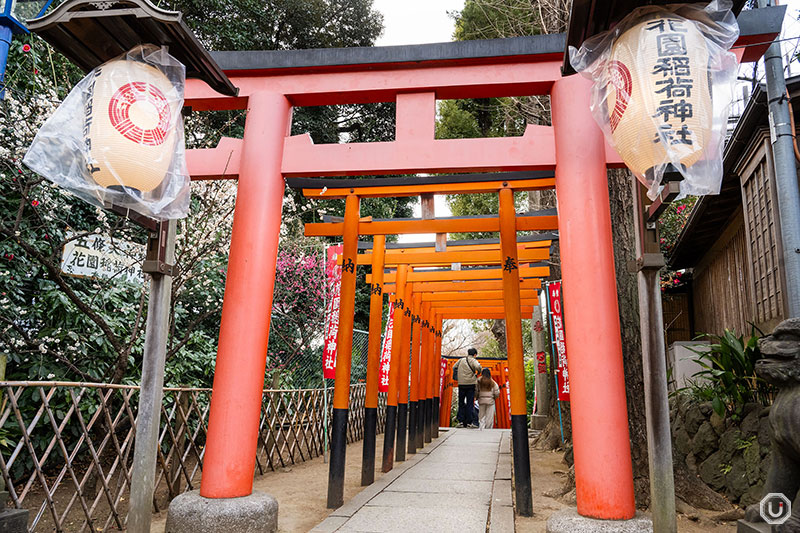
The pathway lined with torii gates leading to Hanazono Inari Shrine
After greeting the komainu (guardian dog statues) right next to the torii gates and proceeding into the shrine grounds, you’ll see the shrine buildings of Hanazono Inari Shrine.
The deity enshrined here is called Ukanomitama no Mikoto., who is depicted in the Kojiki, Japan’s oldest written record, as the deity who presides over abundant harvests of the five grains.
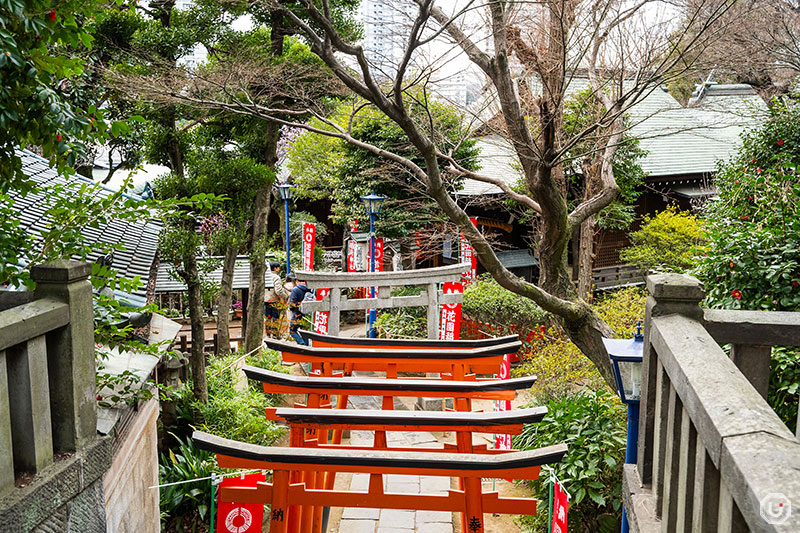
The shrine buildings of Hanazono Inari Shrine visible beyond the torii gates
Hanazono Inari Shrine, which enshrines Ukanomitama no Mikoto, is believed to protect livelihood and provide blessings for matchmaking and marital harmony.
It’s said that by visiting here, you will be blessed with all kinds of good relationships, not just in love.
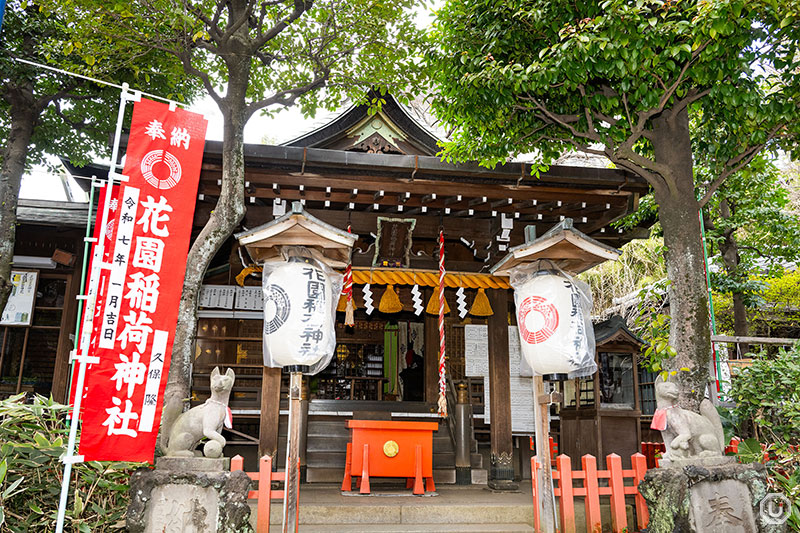
The shrine building of Hanazono Inari Shrine
Hanazono Inari Shrine’s must-see spot: Ana Inari Shrine where photography is not allowed
It is a historic site of Hanazono Inari Shrine and was formerly known as Shinobuoka Inari.
The name Ana Inari comes from the fact that, long ago, the deity was enshrined in a stone cave (“ana” from the the Japanese “hora ana” meaning “cave”).
The current shrine building was constructed about 100 years ago. Before that, a small shrine stood in the area where Ana Inari is now located. Even after the new hall was constructed, Ana Inari remained in the shrine grounds.
Hanazono Inari Shrine Information
| Name | 花園稲荷神社 Hanazono Inari Shrine |
|---|---|
| Address | 4-17 Ueno Kōen, Taito-ku, Tokyo
|
| Phone number | 03-3823-2034 |
| Visiting Hours | 6:00-17:00 |
| Omamori and Goshuin | Available from 9:00-17:00 |
| Admission fee | Free |
| Official website | None |
Gojoutenjin-sha: a rare site where two shrines with different origins stand adjacent to each other.
Gojoutenjin-sha is a shrine uniquely situated next to Hanazono Inari Shrine. Right next to the main hall of Gojoutenjin-sha, you can find the hall of Hanazono Inari Shrine, allowing visitors to easily visit two different shrines.
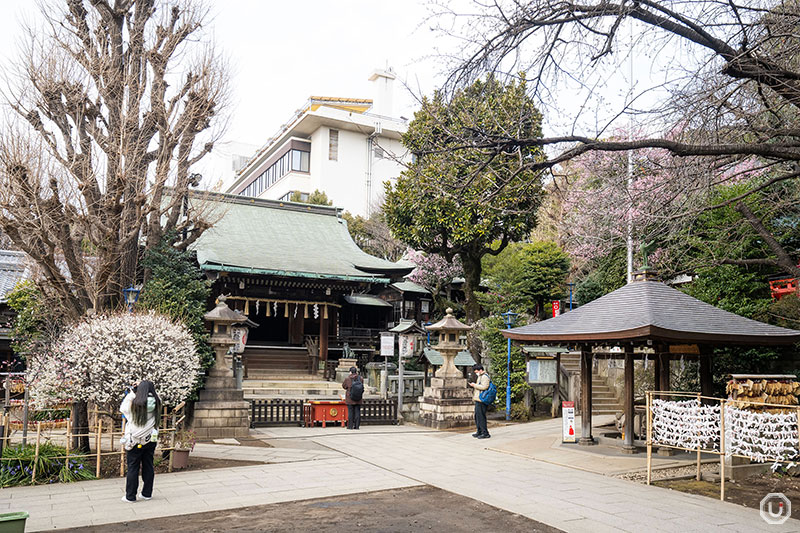
The shrine building of Hanazono Inari Shrine is located behind and to the right of Gojoutenjin-sha.
Its history is ancient; according to legend, it was founded around 110 CE.
It is said that when the hero Yamato Takeru no Mikoto was passing through Shinobuoka in Ueno on his way to battle, he received the protection of Ōnamuji no Mikoto and Sukunahikona no Mikoto, the deities of medicine, which marks the beginning of this shrine.
Visitors can receive omamori for health and recovery from illness.

West Torii Gate
Must-see at Gojoutenjin-sha: lush seasonal flowers blooming within the shrine grounds
A rare site where two shrines with different origins are enshrined next to each other.
In spring, cherry blossoms begin to bloom; in summer, fresh greenery is vibrant; in fall, colorful foliage can be enjoyed; and in winter, camellias and plums add color to the grounds.
The grounds of Gojoutenjin-sha, with its traditional Japanese beauty, offer a peaceful and healing retreat in the heart of the city.

Kaguraden(sacred dance stage) of Gojoutenjin-sha
Gojoutenjin-sha Information
| Name | 五條天神社 Gojoutenjin-sha |
|---|---|
| Address | 4-17 Ueno Kōen, Taito-ku, Tokyo
|
| Phone number | 03-3821-4306 |
| Visiting Hours | 6:00-17:00 |
| Omamori and Goshuin | Available from 9:00-17:00 |
| Admission fee | Free |
| Official website | None |
